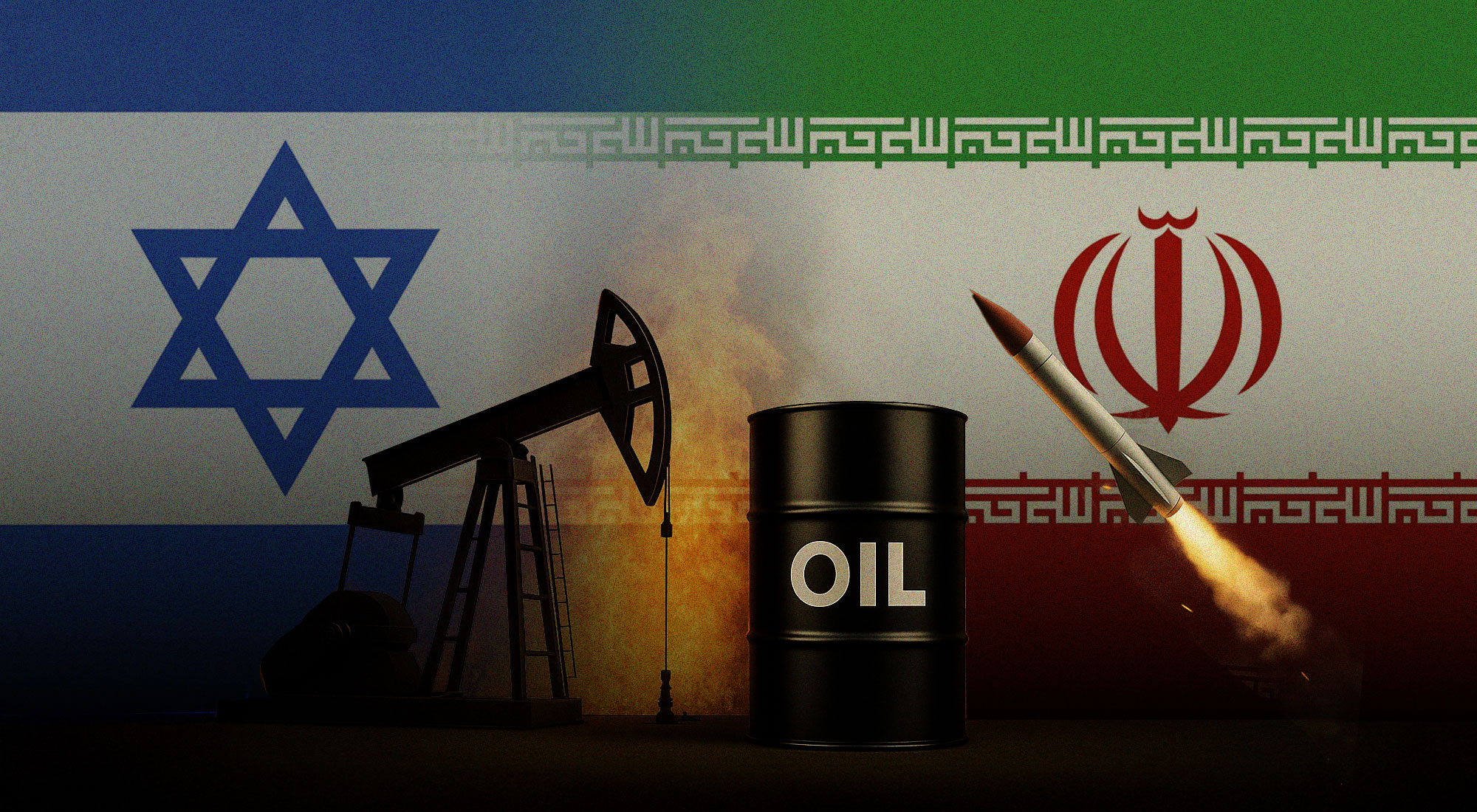Introduction:
As the last C-17 flew the remaining US service members from Afghanistan this past August, the Biden Administration faced intense criticism both domestically and abroad for adhering to its August 31st withdrawal deadline which many felt should have been extended to ensure not only the last remaining US citizens were evacuated from Afghanistan, but also the thousands of Afghan citizens who stood side-by-side and assisted the US military during America’s longest war. Much of the frustration stems from the fact that many of these Afghan nationals were eligible for Special Immigrant Visas (SIVs), a unique program established by Congress to ensure any Afghan who may targeted due to their work relationship with the US military has a legal pathway to immigrate to the United States.
Yet President Biden remained adamant, claiming the date should not been seen as arbitrary, stating:
‘It was designed to save American lives. My predecessor, the former president, signed an agreement with the Taliban to remove U.S. troops by May 1, just months after I was inaugurated. . . we were left with a simple decision: Either follow through on the commitment made by the last administration and leave Afghanistan, or say we weren’t leaving and commit another tens of thousands more troops. Going back to war. That was the choice, the real choice. Between leaving or escalating. I was not going to extend this forever war. And I was not extending a forever exit.’[1]
In mid-September 2001, just days after the 9/11 attacks, a Pew Research poll found that 77% of Americans ‘favored U.S. military action, including the deployment of ground forces, to retaliate against whoever is responsible for the terrorist attacks, even if that means U.S. armed forces might suffer thousands of casualties.’[2] With such strong public support for military engagement, no one dared to question the cost of entering such a war. On September 14, 2001 the US House of Representatives voted nearly unanimously, 420 to 1 approving S.J.Res. 23, authorizing the President to ‘use all necessary and appropriate force against those nations, organizations, or persons he determines planned, authorized, committed, or aided the terrorist attacks that occurred on September 11, 2001, or harbored such organizations or persons….’[3] The resolution seemingly handed President Bush a ‘blank check’ to wage war against those who brazenly attacked the nation on his watch. Days later, on September 20, 2001, while addressing a joint session of Congress, President Bush affirmed: ‘our war on terror begins with al Qaeda, but it does not end there. It will not end until every terrorist group of global reach has been found, stopped, and defeated.’[4]
Two decades later, as America’s longest war came to a close, 69% of Americans polled believe the United States seemingly failed to achieve its objectives in Afghanistan.[5] The day following US withdrawal, President Biden, understanding the frustration of the American public, attempted to reconcile his position stating,
‘This decision about Afghanistan is not just about Afghanistan. It’s about ending an era of major military operations to remake other countries. We saw a mission of counterterrorism in Afghanistan, getting the terrorists to stop the attacks, morph into a counterinsurgency, nation building, trying to create a democratic, cohesive and united Afghanistan. Something that has never been done over many centuries of Afghan’s history. Moving on from that mind-set and those kind of large-scale troop deployments will make us stronger and more effective and safer at home.’[6]
The US withdrawal from Afghanistan symbolizes a coming of an end to post-9/11 driven foreign policy. As the US refocuses its attention towards its perceived competition with China along with combating Russian efforts to upend the American electoral process, there remain lessons learned in Afghanistan that the US must contend with to ensure that similar mistakes, most specifically the costly mistakes do not repeat themselves in the event the US were to engage in extended wartime efforts and/or reconstruction endeavors abroad in the near future.
The Pentagon’s Reliance on Hired Contractors in Afghanistan – an Endeavor that Masked the True Cost of War:
In the days following the US withdrawal from Afghanistan, it was almost impossible to turn on the news without hearing the media mention the price tag of America’s longest war. With estimates at two trillion dollars over the span of two decades spent in Afghanistan – equaling approximately 300 million dollars a day – this constituted an amount so vast that it’s often difficult for the public to process the scope of such military spending and has left many tax-paying Americans to wonder: ‘what exactly did we achieve with all that money?’ Besides the financial toll, the human cost is staggering in its own right. The US lost more than 2,400 service members over the course of 20 years while the Afghanistan military and police lost nearly 66,000 lives. Yet one number that tends to become buried in the news is the death of private contractors, estimated at more than 4000 lives lost.[7] According to a recent Brown University research study which analyzed the cost of war in Afghanistan, ‘military casualties are closely tracked and publicity recorded, yet contractor deaths neither receive the same transparency nor an equivalent public acknowledgment. Contractor deaths are less visible to the American public, which is part of the political usefulness of military contracting.’[8] By shielding the true human cost of war, the Pentagon is able to prolong public support for extended military engagement.
The US military’s reliance on hiring private contractors during wartime efforts is not a recent phenomenon. Such efforts can be traced as far back as the American Revolutionary War in 1775, the American-Mexican War, the Civil War, and more recently, the war in Vietnam. The use of hired mercenaries on the battlefield does not require authorization from Congress, meaning that the true number of ‘soldiers’ on the ground goes unreported to the public. This can often lead to what is known as ‘mission creep,’[9] a ‘a gradual shift in objectives during the course of a military campaign, often resulting in an unplanned, long-term commitment’[10] and eventually increasing the demand for additional troop deployment.
At the same time, contractors are necessary components for extended deployments abroad. There are numerous supportive tasks on the battlefield that US service members simply cannot do. This can range from constructing accommodation to meal preparations, laundry services, and the transportation of goods. Contractors are particularly essential for reconstruction efforts, including the engineering of roads and bridges, the construction of schools, hospitals, airfields, and, in the case of the Vietnam and Afghanistan, constructing power plants.
The development of foreign aid distribution has also impacted the need for an increased demand on the use of private contractors. Since the 1980’s, ‘foreign aid shifted from government-to-government assistance, in which the foreign government was responsible for putting US dollars to work under the oversight of US government officials, to a system in which USAID and other US government agencies contracted with the private sector to implement US funded projects.’[11]
However, in the case of the ‘War on Terror’ post 9/11, particularly as the conflict expanded into Iraq, there simply weren’t enough Americans willing to volunteer for military service to meet the demands of two large-scale conflicts and certainly not enough manpower to train the new security forces in Afghanistan. As the Selective Service System (drafting civilians into war) was abolished after the Vietnam era, today’s military remains an all-volunteer force. This left the Pentagon with the choice of either scaling back operations or enlisting in the efforts of private contractors to both help fight and support the effort of America’s latest war.
Risky Business – The Exorbitant Cost of Inadequate Oversight:
As the US continues to retrench its military footprint from the Middle East and reevaluate the focus of its foreign policy predominately towards China, the mobilization of contractors in the region has skyrocketed. In 2020 alone, the US military employed nearly 53,000 private contractors throughout the Middle East compared to a troop deployment of 35,000 soldiers;[12] a correlation that has grown considerably since the beginning of America’s ‘War on Terror.’ The ratio of contractors to military personnel increased from 1:1 in 2008 to 1.5:1 in 2019. This rise in demand for hired help resulted in $370 billion spent on contracting services – more than half of the total defense spending for the fiscal year of 2019 and 164% higher compared to contractor spending in 2001.[13]
There has been a ‘decades-long trend towards downsizing, reinventing, or outsourcing governmental functions’[14] resulting in the number of government contracts to increase rapidly. More often than not, this increase in demand especially after 9/11 grew at such an exponential rate there was not enough oversight from the Department of Defense or the US Agency for International Development (USAID) who oversaw reconstruction efforts in Afghanistan to ensure monitoring and evaluation of spending was adequately being implemented. By 2011, inadequate staffing shortages within the State Department, D.O.D. and USAID were unable to keep pace with the number of contracts being administered, to the extent that ‘merely finding people to vet new contractors was itself a difficult talk, let alone finding people to monitor the contractors once they had been selected.[15]
2011 also witnessed a peak in US Appropriated Reconstruction Funding for Afghanistan – nearly $16 billion, virtually equivalent to Afghanistan’s GDP in the same year. With minimal oversight and massive amounts of money pouring in, such an environment became a breeding ground for corruption, embezzlement and bribery. In an interview with the Special Inspector General for Afghanistan, a former senior US official who spoke under condition of anonymity describes the difficulty his department faced:
‘In a conflict environment, oversight is difficult, but our systems of accountability are also poor. So, when you push large amounts of money through and there’s no way to pull it back, it creates incentive for corruption. The environment in which you are operating shifts and corrupt actors create ways to bleed the system for all its worth, because they know the money will keep flowing no matter what they do, and they can make more by being corrupt than non-corrupt…That is a dynamic we have to change if we want to use our money well and effectively achieve our goals.’[16]
Political pressure was often placed on USAID to swiftly implement developmental programs to coincide with military operations, thereby indicating to the public that tax-payer dollars were hard at work, which in turn enabled continued support for the war. Yet operating at such a pace diminished their capabilities to conduct appropriate oversight, ultimately creating a dynamic for contractors to take advantage of the system in which they were operating.
Typical examples of fraud and waste which occurred due to a lack of insufficient oversight include the over-budget 557-kilometer Kabul-Kandarhar highway, which, despite a price tag of $175 million, remains unfinished to this day. The ambitious USAID project was intended to help rehabilitate Afghanistan’s infrastructure network while bolstering the local construction industry. Louis Berger Group, which was awarded the contract, was found to be bribing local Afghan government officials as well as over-billing the US government with inflated costs. While legal action was eventually taken in 2015 that resulted in the company’s CEO pleading guilty to conspiracy and defrauding USAID, the company nonetheless took in over $1.4 billion in awarded contracts over the years.
A similar case of squandered tax payer dollars includes a $300 million power plant located outside Kabul, another USAID development project. Insufficient analysis was conducted to determine if such a project had long-term sustainability prior to the award of the contract. Today, the generator currently operates at only 10% capacity as the diesel fuel to operate the plant is far too expensive.[17] This sort of costly yet unsuitable developmental project is just one of many cases the Inspector General for Afghanistan uncovered during ongoing audits. The US military continually placed pressure on USAID to ‘produce results in short amount of time, sometimes without specific definitions of what those results might be or reliable means of measuring them meant that the “burn rate” – the rate at which money was spent on a program was often the only way to measure success.’[18]
While waste and fraud accounted for a $1.8 billion loss from 2018-2019, one of the most alarming cases of extortion was connected to the US military’s lifeline in Afghanistan – its logistical supply chain to feed, fuel, and arm its soldiers. Afghanistan is a landlocked country surrounded by shaky US allies and adjacent to one of its main sources of contention in the region – Iran. Considered one of the most treacherous supply-chain challenges the US has faced to date, the military relied almost entirely on local Afghan truck drivers for their transportation of goods. Contractually, the drivers were solely responsible for the goods being transported and were obliged to provide their own security detail which was generally sub-contracted out. Host Nation Trucking (HNT), a private transportation company in Afghanistan, secured the main contract with the US government worth $2.16 billion to transport nearly ’70% of the total goods and materials distributed to US troops in the field, roughly 6,000 to 8,000 truck missions per month.’[19] While this alleviated logistical concerns for the military, the tax payers’ dollars which fund this logistical quagmire passed through numerous un-vetted hands, particularly tribal warlords who ran a protection racket by extorting drivers in return for safety of passage through some of Afghanistan’s most hostile regions. The operation became a lucrative source of funding for the Taliban, which further undermined US strategy considering they were indirectly financing the insurgency.
Yet the nature of the contracts themselves fueled systematic corruption throughout the two decades of engagement in Afghanistan. The Pentagon became synonymous with ‘non-competitive’ military contracting, particularly throughout the first decade of the war in Afghanistan: in 2010 alone the Pentagon awarded $140 billion in non-competitive contracts. In a statement, Pentagon spokeswoman Cheryl Irwin clarified that their ‘competition rates are lower because of the nature of the things it buys: large weapons and major systems that then have large follow-on contracts that must, by their nature, go to the original supplier.’[20] Nonetheless, such contracts diminish the incentive of manufacturers for further cost reduction.
The Profit of War
In 2012, the Comprehensive Contingency Contracting Reform Act, sponsored by Senator Clair McCaskill, was drafted with the intent to ’enhance security, increase accountability, and improve the contracting of the Federal Government for overseas contingency operations.’[21] While the bill was introduced to the Senate for consideration, it never received a vote; nonetheless Senator McCaskill remained determined to crack down on contractor waste and fraud. After months of negotiations with her fellow lawmakers, portions of her proposed legislation were incorporated into the 2013 National Defense Authorization Act including limitations on cost-type contracts as well heightened transparency on contractor activity. Nevertheless, in order to understand why no comprehensive legislation has been crafted to overhaul defense spending and oversight, it’s important to state the obvious – war is an absolute moneymaker. The US Congress authorized $740.5 billion for defense spending in the 2021 Defense Authorization Act while global defense spending is expected to reach $2 trillion by the end of 2021.[22]
Defense contractors, particularly the ‘titans’ of the industry from Boeing, Northrop Grumman, and Lockheed Martin spend millions on political lobbying as ‘continual wars’ are deeply pegged to their financial interest. Heidi Peltier, a Research Professor at Boston University and contributor to the recent ‘Cost of War’ Research Series, has examined extensively the economic drivers of conflict, stating that ‘contractors who stand to earn significant profits and ensure their continued existence and possible growth have incentives to pressure political decision makers in order to both engage in and prolong engagement in military conflict.’[23]
Besides campaign donations from the defense industry, members of Congress who privately benefit directly from the profit of war further exacerbate the problem. In the weeks leading up to the US’s withdrawal from Afghanistan, Congressman Michael Waltz, a Republican from Florida, remained a vocal critic of the Biden Administration’s plan to end the war, arguing that the US should instead ‘reverse course, relaunch military operations in the region, and crush the Taliban offensive by committing American air power supported by special forces.’ Waltz, indecently is one of the founders of Metis Solutions, a defense contracting firm which provides ‘strategic analysis, intelligence support, and training’[24] through a global network of offices including one in Afghanistan. Throughout the war, Metis was awarded numerous contracts to train Afghan special forces as well as securing the American embassy in Kabul – bringing in $26 million in profits for Waltz himself. With such a vested financial interest in prolonging war, such elected officials can undermine public trust and dampen American support for engaging in future conflicts.
Conclusion:
No matter what future military interventions the US may engage in in the future, the privatization of war will most certainly be some part of the equation. Contractors offer the US military capabilities and expertise in areas that are often outside their scope, particularly in theaters where the natural terrain or hostile insurgencies pose security and logistical challenges for US efforts, as was the case in Afghanistan. In the last decade as a means to counter the resurgence of the Taliban, the number of contractors in Afghanistan began to surpass US troop levels, with the result that contracting became an integral component of not only the wartime effort, but reconstruction endeavors as well. Moreover, there remains a political component to contracting. Both President Obama and Trump campaigned on the promise of a reduction in troop deployment abroad, yet by promising to bring the troops home while simultaneously increasing the number of contractors in the country, this approach ultimately shielded the true cost of war to the American public. While attempting to create the illusion that the US presence in Afghanistan was dwindling ‘the camouflage provided by using contractors diminishes pressure to end a conflict. In this case, continual war may not be driven by contractors, but it is enabled by them.’[25]
The astonishing cost of the war in Afghanistan, which averaged $300 million per day over two decades, becomes even more bewildering when compared to past successful reconstruction efforts. From 2002 to 2019, the US Congress approved $134 billion in appropriations for Afghanistan, far exceeding the post-WWII Marshall Plan which helped to rebuild war-torn Western Europe. Considering Afghanistan fell to the Taliban in a matter of days this past August, many Americans who bore the cost of war are left to wonder: what was it all for?
This question comes at a critical time as Democrats are frantically trying to pass the core of President Biden’s economic agenda known as the “Build Back Better’ plan, which focuses on lowering the cost of childcare and healthcare premiums, expands Medicare coverage, tackling climate change and creating millions of jobs; all urgent tasks at hand that will affect the majority of Americans directly. Nonetheless, Biden is facing much resistance from Republicans over the $3.5 trillion price tag; meanwhile, the US’s inflated defense budget only increases the US deficit and creates pressure to minimize non-defense spending. The US should utilize the end of its longest war as a reflection point to truly reconcile what is the biggest threat to the nation going forward, as, more often than not, those threats are domestic rather than foreign. As programs such as universal healthcare, infrastructure spending, investments in green energy, and education remain underfunded or not funded at all, it’s up to the US voter to decide at the ballot box which priorities matter going forward.
Bipartisan spending on defense is one of the few areas politicians typically agree on. The combined cost of wars in Iraq and Afghanistan is estimated at $6.4 trillion. Tackling the idea of a reduction in military spending is no easy feat, especially when defense industries spend upwards of ‘$2.5 billion in lobbying spending to influence defense policy’[26] in Washington. Yet considering that more American’s have died in the last year due to the COVID-19 pandemic compared to all US wars combined since WWII, it is now imperative that elected officials set the priory for the well-being of the American people rather than the American defense industry. While most average Americans can’t beat the campaign contributions of Lockheed Martin or Raytheon, they have a resource that is far mightier than the dollar – their vote.
References
[1] President Joseph R. Biden. 2021. ‘Remarks by President Biden on the End of the War in Afghanistan,’ The White House, https://www.whitehouse.gov/briefing-room/speeches-remarks/2021/08/31/remarks-by-president-biden-on-the-end-of-the-war-in-afghanistan/
[2] Hannah Hartig and Carroll Doherty. 2021. ‘Two Decades Later, the Enduring Legacy of 9/11,’ Pew Research Center, https://www.pewresearch.org/politics/2021/09/02/two-decades-later-the-enduring-legacy-of-9-11/
[3] ’S.J.Res.23 – Authorization for Use of Military Force,’ 2001, United States Congress, https://www.congress.gov/bill/107th-congress/senate-joint-resolution/23
[4] Gary L. Gregg II. ‘George W. Bush: Foreign Affairs,’ Miller Center, The University of Virginia, https://millercenter.org/president/gwbush/foreign-affairs
[5] Ted Van Green and Carroll Doherty. 2021. ‘Majority of U.S. public favors Afghanistan troop withdrawal; Biden criticized for his handling of situation,’ Pew Research Center, https://www.pewresearch.org/fact-tank/2021/08/31/majority-of-u-s-public-favors-afghanistan-troop-withdrawal-biden-criticized-for-his-handling-of-situation/
[6] President Joseph R. Biden. 2021. ‘Remarks by President Biden on the End of the War in Afghanistan,’ The White House, https://www.whitehouse.gov/briefing-room/speeches-remarks/2021/08/31/remarks-by-president-biden-on-the-end-of-the-war-in-afghanistan/
[7] Ellen Knickmeyer. 2021. ‘Costs of the Afghanistan war, in lives and dollars,’ Associated Press, https://apnews.com/article/middle-east-business-afghanistan-43d8f53b35e80ec18c130cd683e1a38f
[8] Heidi Peltier. 2020. ‘The Growth of the “Camo Economy” and the Commercialization of the Post-9/11 Wars,’ Brown University, https://watson.brown.edu/costsofwar/papers/economic
[9] Sean McFate. 2016. ‘America’s Addiction to Mercenaries,’ The Atlantic,’ https://www.theatlantic.com/international/archive/2016/08/iraq-afghanistan-contractor-pentagon-obama/495731/
[10] ‘Mission Creep,’ Oxford Language Dictionary, https://www.oed.com
[11] ‘The Risk of Doing the Wrong Thing Perfectly: Monitoring and Evaluating of Reconstruction Contracting in Afghanistan,’ Special Inspector General for Afghanistan Reconstruction, https://www.sigar.mil/pdf/lessonslearned/SIGAR-21-41-LL.pdf
[12] Alex Horton and Aaron Gregg. 2020. ‘Use of military contractors shrouds true costs of war. Washington wants it that way, study says,’ The Washington Post, https://www.washingtonpost.com/national-security/2020/06/30/military-contractor-study/
[13] Heidi Peltier. 2020. ‘The Growth of the “Camo Economy” and the Commercialization of the Post-9/11 Wars,’ Brown University, https://watson.brown.edu/costsofwar/papers/economic
[14] ‘The Risk of Doing the Wrong Thing Perfectly: Monitoring and Evaluating of Reconstruction Contracting in Afghanistan,’ Special Inspector General for Afghanistan Reconstruction, https://www.sigar.mil/pdf/lessonslearned/SIGAR-21-41-LL.pdf
[15] ‘What we Need to Learn: Lessons from Twenty Years of Afghanistan Reconstruction,’ Special Inspector General for Afghanistan Reconstruction, https://www.sigar.mil/pdf/lessonslearned/SIGAR-21-46-LL.pdf
[16] ‘Corruption in Conflict: Lesson from the US Experience in Afghanistan,’ Special Inspector General for Afghanistan Reconstruction, https://www.sigar.mil/interactive-reports/corruption-in-conflict/index.html
[17] Lindsay Wise. 2013. ‘Sen. Claire McCaskill leaps hurdles to overhauling wartime contracting,’ McClatchy, https://www.mcclatchydc.com/news/politics-government/congress/article24743218.html
[18] ‘The Risk of Doing the Wrong Thing Perfectly: Monitoring and Evaluating of Reconstruction Contracting in Afghanistan,’ Special Inspector General for Afghanistan Reconstruction, https://www.sigar.mil/pdf/lessonslearned/SIGAR-21-41-LL.pdf
[19] ‘Warlord, Inc. Extortion and Corruption Along the U.S. Supply Chain in Afghanistan,’ Committee on Oversight and Government Reform, U.S. House of Representatives, https://www.hsdl.org/?view&did=23047
[20] Sharon Weinberger. 2010. ‘Windfalls of War: Pentagon’s No-Bid Contracts Triple in 10 Years of War,’ The Center for Public Integrity, https://publicintegrity.org/national-security/windfalls-of-war-pentagons-no-bid-contracts-triple-in-10-years-of-war/
[21] ‘S. 2139 (112th): Comprehensive Contingency Contracting Reform Act of 2012,’ US Congress, https://www.congress.gov/bill/112th-congress/senate-bill/2139/text?r=51&s=1
[22] ‘2021 aerospace and defense industry outlook,’ Deloitte, https://www2.deloitte.com/us/en/pages/manufacturing/articles/global-aerospace-and-defense-industry-outlook.html
[23] Heidi Peltier. 2020. ‘The Growth of the “Camo Economy” and the Commercialization of the Post-9/11 Wars,’ Brown University, https://watson.brown.edu/costsofwar/papers/economic
[24] Lee Fang. 2021. ‘Congressman Seeking to Relaunch Afghan War Made Millions in Defense Contracting,’ The Intercept, https://theintercept.com/2021/08/20/mike-waltz-afghanistan/
[25] Heidi Peltier. 2020. ‘The Growth of the “Camo Economy” and the Commercialization of the Post-9/11 Wars,’ Brown University, https://watson.brown.edu/costsofwar/papers/economic
[26] Dan Auble. 2021. ‘Capitalizing on conflict: How defense contractors and foreign nations lobby for arms sales,’ Center for Responsive Politics, https://www.opensecrets.org/news/reports/capitalizing-on-conflict








